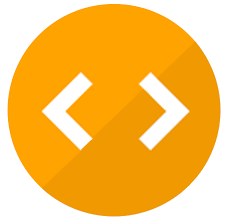Check nearby libraries
Buy this book

This work doesn't have a description yet. Can you add one?
Check nearby libraries
Buy this book

Subjects
Computer programming| Edition | Availability |
|---|---|
|
1
Concepts, Techniques, and Models of Computer Programming
2004, MIT Press
in English
0262332590 9780262332590
|
zzzz
|
|
2
Concepts, Techniques, and Models of Computer Programming
2004, MIT Press
in English
0262257165 9780262257169
|
zzzz
|
|
3
Concepts, Techniques, and Models of Computer Programming
March 1, 2004, The MIT Press
Hardcover
in English
0262220695 9780262220699
|
aaaa
|
Book Details
Table of Contents
List of Figures
List of Tables
Preface
Running the example programs
I. Introduction
1. Introduction to Programming Concepts
1.1. A calculator
1.2. Variables
1.3. Functions
1.4. Lists
1.5. Functions over lists
1.6. Correctness
1.7. Complexity
1.8. Lazy evaluation
1.9. Higher-order programming
1.10. Concurrency
1.11. Dataflow
1.12. State
1.13. Objects
1.14. Classes
1.15. Nondeterminism and time
1.16. Atomicity
1.17. Where do we go from here
1.18. Exercises
II. General Computation Models
2. Declarative Computation Model
2.1. Defining practical programming languages
2.2. The single-assignment store
2.3. Kernel language
2.4. Kernel language semantics
2.5. From kernel language to practical language
2.6. Exceptions
2.7. Advanced topics
2.8. Exercises
3. Declarative Programming Techniques
3.1. What is declarativeness?
3.2. Iterative computation
3.3. Recursive computation
3.4. Programming with recursion
3.5. Time and space efficiency
3.6. Higher-order programming
3.7. Abstract data types
3.8. Nondeclarative needs
3.9. Program design in the small
3.10. Exercises
4. Declarative Concurrency
4.1. The data-driven concurrent model
4.2. Basic thread programming techniques
4.3. Streams
4.4. Using the declarative concurrent model directly
4.5. Lazy execution
4.6. Soft real-time programming
4.7. Limitations and extensions of declarative programming
4.8. The Haskell language
4.9. Advanced topics
4.10. Historical notes
4.11. Exercises
5. Message-Passing Concurrency
5.1. The message-passing concurrent model
5.2. Port objects
5.3. Simple message protocols
5.4. Program design for concurrency
5.5. Using the message-passing concurrent model directly
5.6. The Erlang language
5.7. Advanced topics
5.8. Exercises
6. Explicit State
6.1. What is state?
6.2. State and system building
6.3. The declarative model with explicit state
6.4. Abstract data types
6.5. Stateful collections
6.6. Reasoning with state
6.7. Program design in the large
6.8. Case studies
6.9. Advanced topics
6.10. Exercises
7. Object-Oriented Programming
7.1. Motivations
7.2. Classes as complete ADTs
7.3. Classes as incremental ADTs
7.4. Programming with inheritance
7.5. Relation to other computation models
7.6. Implementing the object system
7.7. The Java language (sequential part)
7.8. Active objects
7.9. Exercises
8. Shared-State Concurrency
8.1. The shared-state concurrent model
8.2. Programming with concurrency
8.3. Locks
8.4. Monitors
8.5. Transactions
8.6. The Java language (concurrent part)
8.7. Exercises
9. Relational Programming
9.1. The relational computation model
9.2. Further examples
9.3. Relation to logic programming
9.4. Natural language parsing
9.5. A grammar interpreter
9.6. Databases
9.7. The Prolog language
9.8. Exercises
III. Specialized Computation Models
10. Graphical User Interface Programming
10.1. Basic concepts
10.2. Using the declarative/procedural approach
10.3. Case studies
10.4. Implementing the GUI tool
10.5. Exercises
11. Distributed Programming
11.1. Taxonomy of distributed systems
11.2. The distribution model
11.3. Distribution of declarative data
11.4. Distribution of state
11.5. Network awareness
11.6. Common distributed programming patterns
11.7. Distribution protocols
11.8. Partial failure
11.9. Security
11.10. Building applications
11.11. Exercises
12. Constraint Programming
12.1. Propagate and search
12.2. Programming techniques
12.3. The constraint-based computation model
12.4. Computation spaces
12.5. Implementing the relational computation model
12.6. Exercises
IV. Semantics
13. Language Semantics
13.1. The shared-state concurrent model
13.2. Declarative concurrency
13.3. Eight computation models
13.4. Semantics of common abstractions
13.5. Historical notes
13.6. Exercises
V. Appendices
A. Mozart System Development Environment
A.1. Interactive interface
A.2. Batch interface
B. Basic Data Types
B.1. Numbers (integers, floats, and characters)
B.2. Literals (atoms and names)
B.3. Records and tuples
B.4. Chunks (limited records)
B.5. Lists
B.6. Strings
B.7. Virtual strings
C. Language Syntax
C.1. Interactive statements
C.2. Statements and expressions
C.3. Nonterminals for statements and expressions
C.4. Operators
C.5. Keywords
C.6. Lexical syntax
D. General Computation Model
D.1. Creative extension principle
D.2. Kernel language
D.3. Concepts
D.4. Different forms of state
D.5. Other concepts
D.6. Layered language design
Bibliography
Index
Edition Notes
Classifications
The Physical Object
Edition Identifiers
Work Identifiers
Community Reviews (0)
| June 29, 2019 | Edited by MARC Bot | import existing book |
| October 22, 2014 | Edited by r. clayton | added toc |
| July 28, 2014 | Created by ImportBot | import new book |









